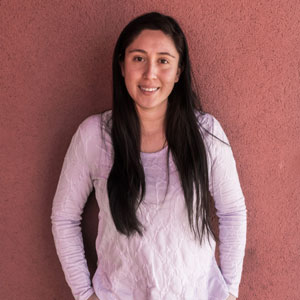Artist Statement
Informed through her cultural background that is ever migrating between Mexico and the United States, Daisy Quezada address social issues that aren’t readily discussed. Through her work she hopes to substantiate a voice with an overarching identity of being cast aside.
The work bridges the personal to the social, forming a relationship between immigration, gender inequality, labor, and class issues that have resulted in a people being left devalued and cast aside within their present “community” and culture. The work situates itself within the space between.
Using clothing that was given to her by individuals being impacted and/or affected by oppressive structures, Quezada uses a lace draping technique to breath the pieces into a space where they are viewed again. Drawing from the internal vulnerability carried by each garment the piece’s act as imprints of states. They are a culmination of identities, collected and externalized.
Bio
Daisy Quezada Ureña is visual artist and educator based in Santa Fe, New Mexico. Within her practice she creates ceramic works and installations that speak to identity and place in relation to social structures that cross between imposed borders. Quezada Ureña has worked alongside nonprofit organizations like El Otro Lado/The Other Side and Downtown Aurora Visual Arts which impact local communities by bringing art to youth. In 2016 Quezada cofounded Present Cartographers, a collective invested in reflecting border-zone geographies and languages that describe and illustrate resistance to give political frameworks and oppressions, as they are faced by those occupied, or being occupied by, national borders and border enforcement regimens. Recently the collective launched two chapterbooks Terreno: Borderland Linguistics and bosque brotante.
Quezada Ureña’s work has been exhibited nationally and internationally at The Denver Art Museum, Summerhall (Edinburg, Scotland), Gyeonggi Museum of Contemporary Ceramic Art (Icheon City South Korea), New Taipei City Yingge Ceramics Museum (New Taipei Taiwan), Hubei Institute of Fine Arts (Hubei Province, Wuhan, China), and the Guldagergaard: International Ceramic Research Center (Skælskør, Denmark). She is a faculty member in the Studio Arts Department at the Institute of American Indian Arts.











